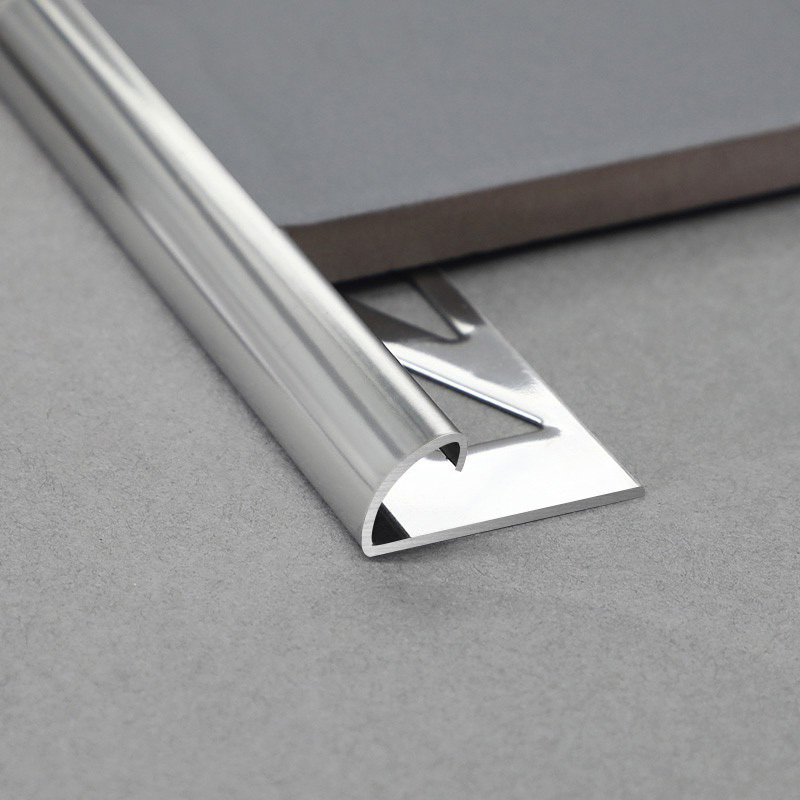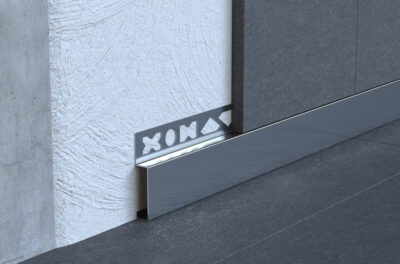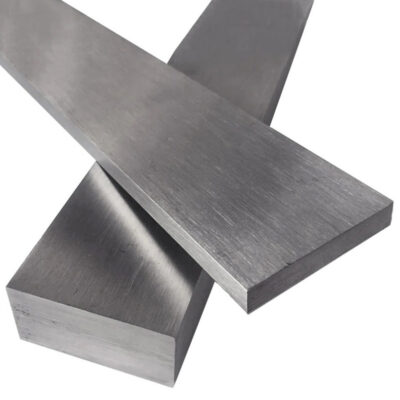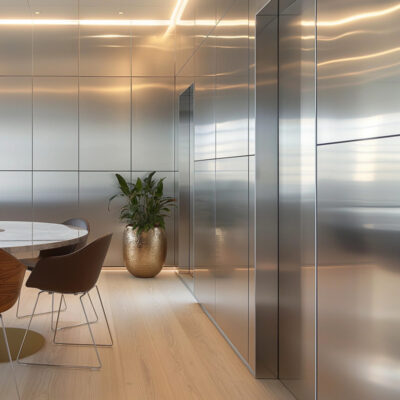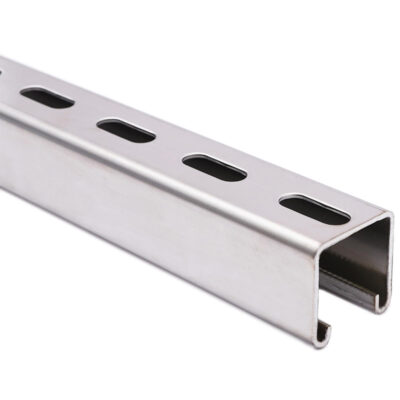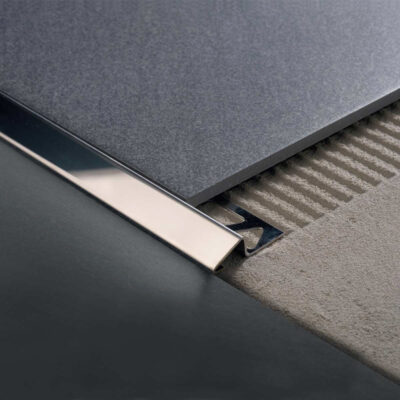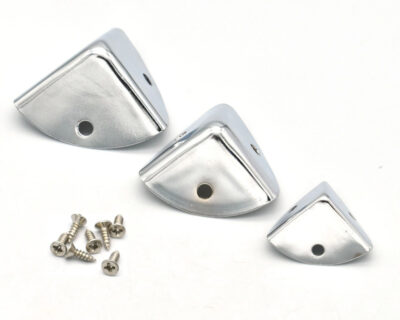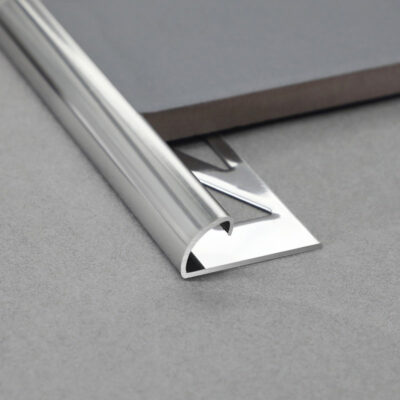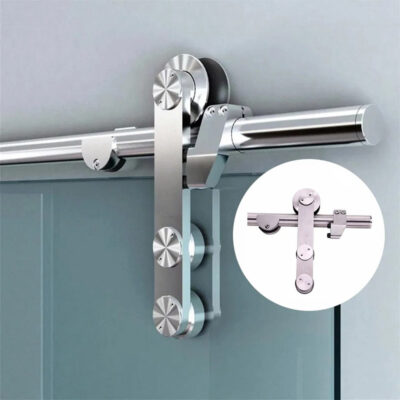The Evolution of Stainless Steel Decorative Trims in Modern Design
Walking through a recently completed luxury hotel lobby last month, I couldn’t help but notice how the subtle gleam of stainless steel trims transformed the entire space. These weren’t just functional elements—they were deliberate design statements. The perfect lines separating wall panels, the elegant transitions between flooring materials, and the sophisticated door frames all featured stainless steel trims that elevated the entire aesthetic. It wasn’t always this way.
Decorative trims have undergone a remarkable transformation over the decades. What began as purely functional elements in classical architecture—wooden moldings to hide gaps and transitions—have evolved into sophisticated design statements. The introduction of stainless steel as a trim material marked a significant turning point in architectural detailing, particularly from the mid-20th century onward.
The journey began in earnest during the Modernist movement when architects like Mies van der Rohe and Walter Gropius embraced industrial materials. Stainless steel, with its sleek appearance and exceptional durability, perfectly complemented their vision of clean lines and functional beauty. Initially limited to high-profile commercial buildings, stainless steel decorative trims gradually found their way into residential applications as manufacturing techniques improved and costs became more reasonable.
Today, these elements have become essential components in contemporary design language. What makes stainless steel trims particularly compelling is their versatility—they can be understated and nearly invisible or bold statement pieces that define a space. E-Sang and other manufacturers have expanded the possibilities with innovative profiles and finishing techniques that cater to diverse aesthetic preferences.
The hospitality industry has been particularly influential in showcasing the potential of stainless steel decorative trims. Hotels, restaurants, and retail spaces frequently use these elements to create memorable environments that convey luxury and attention to detail. According to design consultant Lisa Hendrickson, “The psychological impact of properly placed metallic elements shouldn’t be underestimated—they catch light in ways that subtly direct attention and create rhythm within spaces.”
Types and Applications of Stainless Steel Decorative Trims
Stainless steel decorative trims come in a surprising variety of profiles and configurations, each designed to serve specific aesthetic and functional purposes. Understanding these variations can help designers and homeowners make informed choices that enhance their spaces while addressing practical needs.
The most common profiles include:
L-Angle Trims: These simple right-angle profiles provide clean edges for corners and transitions between materials. They’re particularly effective at wall borders, ceiling junctions, and flooring transitions.
U-Channel Trims: Creating a channel that captures the edge of materials like glass, wood panels, or stone, these trims provide both protection and visual framing.
T-Bar Trims: Used when three surfaces meet, these trims create clean, professional intersections that prevent material separation over time.
Round and Square Edge Trims: These finishing pieces add sophisticated edges to countertops, shelving, and furniture elements with various radius options.
Custom Profiles: For specialized applications, manufacturers now offer bespoke profiles that solve unique architectural challenges while maintaining aesthetic standards.
What makes these trims particularly versatile is their application across virtually every interior space. In kitchens, stainless steel decorative trims are ideal for countertop edges, backsplash terminations, and cabinet accents. They resist the moisture, heat, and food acids common in these environments. Bathrooms benefit similarly, with the added advantage of stainless steel’s exceptional performance in high-humidity settings.
Commercial applications have pushed the boundaries even further. Retail spaces employ these trims to create distinctive display systems, while office environments integrate them into partition systems and architectural details. Healthcare facilities value stainless steel trims for their cleanability and antimicrobial potential when specified with appropriate finishes.
The integration with other materials deserves special attention. The contrast between stainless steel and materials like wood, stone, or colored glass creates dynamic visual tension that designers can leverage. I’ve seen particularly striking applications where brushed stainless trims frame rich walnut panels or provide separation between marble slabs of different colors.
Technical Specifications and Material Properties
The performance and appearance of stainless steel decorative trims depend significantly on their composition and manufacturing specifications. Contrary to what some might assume, “stainless steel” isn’t a single material but rather a family of alloys with varying properties. For architectural trims, several grades predominate, each with specific advantages.
Grade 304 stainless steel (18/8) represents the most commonly used alloy for interior decorative trims. It contains approximately 18% chromium and 8% nickel, providing excellent corrosion resistance for most indoor applications. This grade balances cost-effectiveness with performance, making it suitable for kitchens, bathrooms, and general interior applications where moderate moisture exposure occurs.
For more demanding environments, Grade 316 (marine-grade) includes molybdenum in its composition, significantly enhancing resistance to chlorides and acids. This makes it the preferred choice for outdoor applications, coastal settings, or areas with aggressive cleaning regimens. The price premium (typically 20-30% higher than 304) reflects this superior performance.
The table below summarizes the key technical specifications for common stainless steel grades used in decorative trims:
| Grade | Composition | Corrosion Resistance | Typical Applications | Relative Cost |
|---|---|---|---|---|
| 304 (18/8) | 18% Chromium, 8% Nickel | Good for indoor environments | Interior trims, kitchen & bath applications | Baseline |
| 316 | 16% Chromium, 10% Nickel, 2% Molybdenum | Superior, especially to chlorides | Exterior applications, coastal areas, pool surrounds | 20-30% premium |
| 430 | 17% Chromium, no Nickel | Moderate, suitable for dry environments | Decorative interior applications with minimal moisture | 10-15% lower than 304 |
| 316Ti | 316 with Titanium addition | Excellent at elevated temperatures | Special applications near heat sources | 30-40% premium |
Beyond the base material, finish options dramatically affect both aesthetics and performance. Manufacturing engineer Sandra Peterson explains, “The surface finish of stainless steel isn’t just about appearance—it fundamentally alters how the material interacts with its environment, from fingerprint resistance to cleanability.”
Common finish options include:
- Mirror Finish (#8): Highly reflective with a mirror-like appearance, though susceptible to showing fingerprints and requiring regular cleaning
- Brushed/Satin (#4): The most popular finish, with a unidirectional texture that balances reflection and practicality
- Matte/Dull (#2B): Low reflectivity with excellent fingerprint resistance, ideal for high-traffic areas
- Patterned Finishes: Including engine-turned, embossed, and custom textures that add visual interest while masking minor scratches and fingerprints
The thickness of trim material also matters significantly. Typical gauge measurements range from 0.8mm to 3mm, with the appropriate choice depending on the application’s structural requirements and desired visual weight. Heavier gauges provide greater durability but may present installation challenges in complex configurations.
Installation Techniques for Stainless Steel Decorative Trims
The difference between a mediocre and exceptional installation of stainless steel decorative trims often comes down to preparation and technique. During a recent hotel renovation project, I watched a skilled installer transform what seemed like simple metal strips into architectural elements that looked as though they were integral parts of the building’s design. His methodical approach revealed the craftsmanship behind these seemingly straightforward components.
Successful installation begins with proper measuring and planning. Stainless steel trims typically have little tolerance for error, so precise measurements are essential. Most professionals recommend measuring twice and adding appropriate allowances for corners and transitions. Temperature considerations should not be overlooked—stainless steel expands and contracts with temperature changes, though less dramatically than some other metals. For longer runs, expansion gaps may be necessary, especially in environments with significant temperature fluctuations.
The attachment method varies based on the specific trim profile and application. Common approaches include:
Adhesive Mounting: Using construction-grade adhesives specifically formulated for metal-to-substrate bonding. This technique works well for lighter trims on stable surfaces.
Mechanical Fastening: Employing screws, nails, or clips that are either concealed or integrated into the design. This method provides superior holding strength but requires careful planning for fastener placement.
Channel Systems: Some trim profiles are designed to slide onto substrate edges or into prepared recesses, creating clean installations without visible fasteners.
Combination Methods: Many professional installations use both adhesives and mechanical fasteners to ensure long-term stability while minimizing visible attachment points.
The tools required for working with stainless steel trims deserve special attention. Standard woodworking tools often prove inadequate. Metal-cutting shears, fine-toothed saws, and specialized miter boxes designed for metal work make clean cuts possible. For curved installations, dedicated trim-bending tools help achieve consistent radii without crimping or deforming the material.
When cutting stainless steel trims, protecting both the material and the installer is crucial. Metal burrs can be both unsightly and dangerous, requiring careful deburring after cutting. Protective gloves and eyewear are essentials, not options, when working with these materials.
One particular challenge involves creating clean corners. While pre-fabricated corner pieces are available for some standard profiles, custom applications often require miter cuts. Achieving precise 45-degree angles demands patience and precision. One installer I worked with shared this approach: “I always cut my miters slightly long and then fine-tune with a metal file to achieve perfect joints. Rushing this step inevitably leads to visible gaps that compromise the entire installation.”
Customization Options and Design Flexibility with Stainless Steel Trims
The design versatility of stainless steel decorative trims extends far beyond standard catalog options. Custom configurations have transformed these functional elements into signature design features in many contemporary spaces. When I consulted on a boutique office renovation last year, the architect specified a unique bullnose profile with an integrated LED channel—something that wasn’t available off-the-shelf but was fabricated to exact specifications, becoming a defining element of the space.
The dimensional customization options are particularly valuable. While standard profiles typically range from 6mm to 25mm in height or width, custom specifications can accommodate virtually any dimension. This flexibility allows designers to maintain proportional harmony within spaces rather than forcing designs to conform to available sizes. The thickness of the material can also be tailored, balancing visual weight with structural requirements.
Beyond dimensions, profile customization offers tremendous creative potential. Contemporary manufacturing techniques, including CNC machining and specialized roll-forming, have made complex geometries financially accessible for mid-range projects. Profiles that integrate multiple functions—such as trim pieces that simultaneously provide a transition edge while housing lighting or acting as a mounting system—represent a growing trend in architectural applications.
The finish customization options have expanded dramatically in recent years. Beyond the standard polished, brushed, and matte finishes, new techniques include:
- PVD Coating: Physical Vapor Deposition creates colored metallic finishes with excellent durability, allowing stainless steel trims to appear as bronze, gold, copper, or even black while maintaining corrosion resistance
- Custom Patterns: Laser etching, embossing, and mechanical texturing create distinctive surfaces that can complement specific design schemes
- Combination Finishes: Different finishes on different faces of the same trim piece create multi-dimensional visual effects
This table illustrates some of the custom possibilities and their typical applications:
| Customization Type | Options | Design Impact | Typical Lead Time | Cost Premium |
|---|---|---|---|---|
| Profile Geometry | Standard, custom radius, multiple angles, integrated channels | Defines visual character and functional capabilities | 2-6 weeks for tooling | 30-100% |
| Dimensions | Height, width, thickness, length | Ensures proportional harmony within the design context | 1-3 weeks | 10-40% |
| Finish | Polished, brushed, patterned, colored PVD, textured | Determines light reflection, tactile quality, and visual integration | 1-4 weeks | 15-80% |
| Function Integration | Lighting channels, mounting systems, transition capabilities | Expands functionality beyond decorative purposes | 3-8 weeks | 50-200% |
Material scientist Dr. Marcus Chen notes, “The marriage of advanced manufacturing with traditional metalworking has democratized custom metal elements. What once required specialized foundry work can now be produced with precision and consistency using digital fabrication techniques.”
The integration potential with other building systems represents another dimension of customization. Stainless steel trims can be designed to interface with:
- Lighting systems (particularly LED strips)
- Glass partitions and panels
- Flooring transitions
- Wall protection systems
- Acoustic treatment edges
This integrative approach reduces visual clutter while enhancing functionality—a principle that aligns perfectly with contemporary minimalist design philosophies. I’ve seen particularly effective applications in healthcare settings, where stainless trims simultaneously provide corner protection, cleanable transitions, and subtle wayfinding cues through integrated lighting.
Maintenance and Longevity of Stainless Steel Decorative Trims
One of the distinguishing characteristics of stainless steel decorative trims is their exceptional longevity when properly maintained. Unlike many architectural materials that deteriorate visibly over time, stainless steel can maintain its appearance and functionality for decades. Having recently inspected a commercial installation from the early 1990s, I was struck by how the stainless trim elements remained virtually indistinguishable from new installations—a testament to both material quality and appropriate maintenance.
The maintenance requirements vary significantly based on the specific environment and finish. For interior applications with brushed or satin finishes in moderate-use environments, maintenance is remarkably straightforward. Regular dusting with a soft cloth and occasional cleaning with mild soap and water is typically sufficient. For higher-traffic areas or more demanding environments, a more structured approach becomes necessary.
The cleaning frequency and methodology should align with both the environment and the finish:
- Fingerprint-prone environments (public spaces, entries, retail): Weekly cleaning with microfiber cloths and appropriate stainless steel cleaners
- Food preparation areas: Daily cleaning with food-safe detergents and periodic sanitizing
- Humid environments (bathrooms, pool areas): Regular cleaning to remove water deposits and prevent mineral buildup
- Industrial environments: Specialized cleaning protocols to address specific contaminants
One significant maintenance challenge involves preserving directional finishes like brushing or graining. Cleaning against the grain can create micro-scratches that accumulate over time, diminishing the appearance. Always clean in the direction of the grain pattern to maintain the finish integrity.
For mirror or highly polished finishes, preventing scratches requires additional precautions. Facility manager Thomas Rivera advises, “We use only dedicated microfiber cloths for our polished stainless elements and keep them separate from other cleaning materials. Even minor contamination with abrasive particles can compromise these surfaces.”
When damage does occur, restoration options exist for most stainless steel trim installations:
- Minor Scratches: Surface renewal systems specifically designed for stainless steel can address superficial scratches without removing material
- Deep Scratches: Professional refinishing services can restore severely damaged sections through controlled abrasion and refinishing
- Dents or Deformation: Depending on accessibility, specialized tools can reshape many profiles without removal
- Replacement: When damage exceeds repair thresholds, individual sections can typically be replaced without disturbing adjacent materials
The chemical resistance of stainless steel makes it particularly valuable in challenging environments, but certain substances can compromise its integrity. Avoid:
- Chloride-containing cleaners (including bleach in high concentrations)
- Abrasive powders or pads
- Cleaners containing acids with concentrations above 10%
- Extended contact with iron-containing materials that can cause surface rust transfer
The expected lifespan of properly specified and maintained stainless steel trims extends beyond 30 years for interior applications. Even in demanding environments like commercial kitchens or healthcare facilities, 15-20 years of service without significant degradation is realistic. This longevity contributes significantly to the material’s lifecycle cost advantage, despite higher initial investment compared to alternatives.
Cost Considerations and Return on Investment
The financial equation surrounding stainless steel decorative trims extends well beyond initial purchase price. During a recent hospitality renovation project, I faced the classic decision point: use a more affordable alternative trim material with a 5-7 year replacement cycle, or invest in stainless steel trims at approximately triple the initial cost. The lifecycle analysis made the decision clear—the stainless option proved more economical by year 12, with all subsequent years representing significant savings.
Initial pricing for stainless steel decorative trims varies widely based on:
- Grade of stainless steel (304 vs. 316 vs. specialized alloys)
- Finish type and complexity
- Profile dimensions and complexity
- Manufacturing volume
- Market conditions for raw materials
As a general baseline, standard stainless steel trim profiles typically range from $15-45 per linear foot for common dimensions (10-25mm) in 304 stainless with standard finishes. Custom profiles, premium finishes, or 316-grade material can easily double or triple these figures.
This table provides a comparative cost analysis across common trim materials:
| Material | Initial Cost (Relative) | Expected Lifespan | Maintenance Requirements | Lifecycle Cost (20 yr) |
|---|---|---|---|---|
| Stainless Steel (304) | High (3.0x baseline) | 20+ years | Low | Lowest |
| Stainless Steel (316) | Very High (4.0x baseline) | 25+ years | Very Low | Low-Medium |
| Aluminum | Medium (1.5x baseline) | 10-15 years | Medium | Medium |
| Brass/Bronze | High (3.5x baseline) | 15-20 years | High (patination) | Medium-High |
| Plastic/PVC | Low (baseline) | 5-7 years | Medium (yellowing, brittleness) | Highest |
| Powder-coated Metal | Medium-Low (1.2x baseline) | 8-12 years | Medium (chipping, scratching) | Medium-High |
The installation costs also warrant consideration. Stainless steel generally requires more specialized tools and techniques than alternative materials, potentially adding 15-30% to installation labor costs. However, this premium is often offset by reduced installation failures and callbacks.
Several factors influence the return on investment calculation:
Property Type and Holding Period: For commercial properties with long-term ownership horizons, the lifecycle advantages of stainless steel are compelling. Short-term development projects may find it harder to justify the premium.
Visibility and Design Impact: Highly visible applications that contribute significantly to aesthetic impressions (lobby areas, feature walls, etc.) generally justify higher material investments.
Environmental Conditions: Spaces with moisture, chemical exposure, or heavy traffic accelerate the deterioration of lower-quality materials, amplifying the relative advantage of stainless steel.
Maintenance Resources: Properties with limited maintenance staff or budgets benefit particularly from low-maintenance materials, making the initial premium more justified.
Green Building Certification: The longevity and recyclability of stainless steel contribute favorably to various sustainability metrics, potentially adding value beyond direct material performance.
Budget constraints sometimes necessitate strategic deployment rather than wholesale specification. Leading hospitality designer Elena Rodriguez suggests, “I often specify stainless trims for the most visible and high-traffic areas, while using more affordable alternatives in secondary spaces. This balanced approach delivers maximum aesthetic impact while respecting budget realities.”
For renovation projects, the cost calculation must include removal and disposal of existing materials. Stainless steel’s longevity reduces these recurring costs, particularly in spaces where renovation disruption carries significant operational impacts such as hotels, hospitals, and retail environments.
Future Trends and Innovations in Stainless Steel Decorative Elements
The evolution of stainless steel decorative trims continues to accelerate, driven by advances in manufacturing technology, changing aesthetic preferences, and expanded functional requirements. Several emerging trends point toward exciting developments in this specialty field.
Miniaturization represents one significant direction. While traditional trim profiles typically range from 10-25mm in visible dimension, new manufacturing capabilities are enabling much finer profiles—some as narrow as 3-4mm—that create almost imperceptible transitions while maintaining structural integrity. These micro-trims appeal to minimalist design sensibilities by nearly disappearing visually while still performing their functional role. During a recent architectural expo, I was particularly impressed by a 3mm trim system that created shadow lines so subtle they appeared as intentional negative spaces rather than physical elements.
Integration of smart technologies within stainless steel trim systems points toward a future where decorative elements serve multiple functions. Developments include:
- Integrated Lighting: LED channels built directly into trim profiles, sometimes with controllable RGB capabilities
- Sensing Capabilities: Touch-sensitive trim elements that control adjacent systems (lighting, audio, etc.)
- Information Display: Trim systems with embedded fiber optics or display elements for wayfinding or status indication
- Thermal Management: Trims that incorporate heating elements for comfort or condensation prevention
Sustainability innovations are also reshaping the industry. While stainless steel has always been 100% recyclable, newer approaches focus on reducing the environmental footprint throughout the lifecycle:
- Reduced-energy Manufacturing: Advanced forming techniques that minimize energy consumption and waste
- Higher Recycled Content: Some manufacturers now offer trim products with certified recycled content exceeding 90%
- End-of-life Planning: Systems designed for easy disassembly and material separation
- Carbon Footprint Certification: Leading suppliers now provide environmental product declarations (EPDs) documenting carbon impacts
Material scientist Dr. Leila Ahmadi predicts, “The next generation of stainless steel architectural elements will likely incorporate nano-structured surfaces that resist fingerprints and biological contamination through physical properties rather than chemical coatings. Early laboratory results suggest dramatic improvements in cleanability without sacrificing appearance.”
The aesthetic direction of stainless steel finishes continues to diversify beyond traditional options. New finishes include:
- Ultra-matte Finishes: Near-zero reflectivity surfaces that maintain metallic character without glare
- Gradient Treatments: Finishes that transition from one appearance to another along the length or width
- Selective Texturing: Patterns applied to specific portions of trim profiles, creating multi-dimensional effects
- Biomimetic Surfaces: Textures inspired by natural patterns like wood grain, stone, or biological structures
The dimensional constraints are also expanding. While standard lengths typically max out around 3 meters due to shipping limitations, new joining techniques allow for virtually seamless connections, enabling consistent runs of decorative trims across expansive spaces. This capability is particularly valuable in premium commercial environments where visual continuity enhances perceived quality.
Manufacturing customization is becoming more accessible through digital fabrication. What once required expensive tooling and high minimum orders can now be produced economically in smaller quantities through advanced CNC processing. This democratization of custom metalwork allows even modest projects to incorporate bespoke stainless steel trim elements that precisely match design requirements.
The intersection of stainless steel trims with other architectural systems represents perhaps the most promising frontier. Integrative approaches that combine trim functions with mechanical systems, acoustical treatments, and technological infrastructure reduce visual complexity while enhancing functionality. These multi-purpose elements align perfectly with contemporary design’s emphasis on clean, uncluttered spaces without sacrificing performance.
As building methodologies evolve toward more prefabricated and modular approaches, stainless steel decorative trims are adapting accordingly. New connection systems facilitate installation in prefabricated environments, while standardized interfaces enable seamless integration with modular wall and ceiling systems. These developments enhance installation efficiency while maintaining the premium aesthetic that makes stainless steel decorative trims a continuing presence in sophisticated architectural projects.
Frequently Asked Questions about Stainless Steel Decorative Trims
Q: What are Stainless Steel Decorative Trims, and how are they used?
A: Stainless Steel Decorative Trims are versatile profiles used to enhance the appearance of spaces by providing clean lines and professional finishes. They are typically installed on wall edges, corners, and flooring transitions to protect tiles from chipping and add a sleek aesthetic. These trims are popular in both residential and commercial projects, including kitchens, bathrooms, and outdoor areas.
Q: What types of Stainless Steel Decorative Trims are available?
A: There are several types of Stainless Steel Decorative Trims available, each serving a specific purpose:
- L-shaped Trim: Ideal for external corners, providing protection and a smooth transition.
- Round Edge Trim: Offers a rounded finish for a softer look.
- Square Edge Trim: Provides a contemporary and clean finish.
- U-shaped Trim: Used for transitions between surfaces.
- T-shaped Trim: Suitable for joining two tiled surfaces.
Q: How do I choose the right Stainless Steel Decorative Trim for my project?
A: Choosing the right Stainless Steel Decorative Trim involves considering several factors:
- Grade of Stainless Steel: Commonly, 304 for indoor use and 316 for harsher environments.
- Thickness: Thicker trims offer more durability but may not be as visually appealing as thinner ones.
- Finish: Options include brushed, matte, or polished, depending on the desired aesthetic.
Q: Can I install Stainless Steel Decorative Trims myself?
A: Yes, you can install Stainless Steel Decorative Trims yourself with basic DIY skills. It is essential to measure accurately, cut the trim carefully, and follow the manufacturer’s installation instructions. Methods include using construction adhesive or clips, depending on the surface and desired outcome.
Q: How do I maintain Stainless Steel Decorative Trims?
A: Maintaining Stainless Steel Decorative Trims is straightforward. They can be cleaned with mild soap and water. Avoid using abrasive cleaners that might scratch the surface. Regular cleaning helps maintain their appearance and ensures they remain durable over time.

